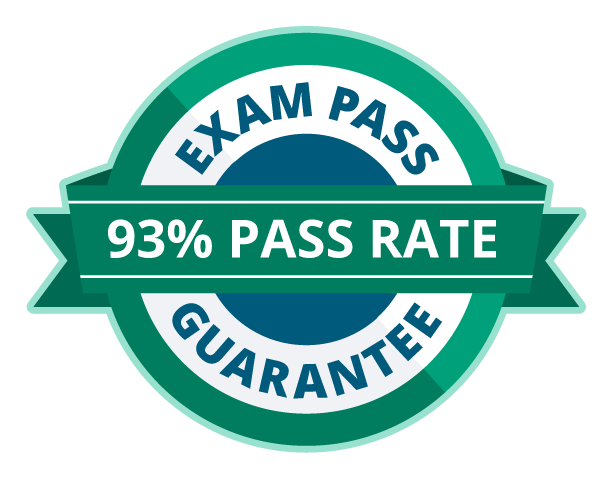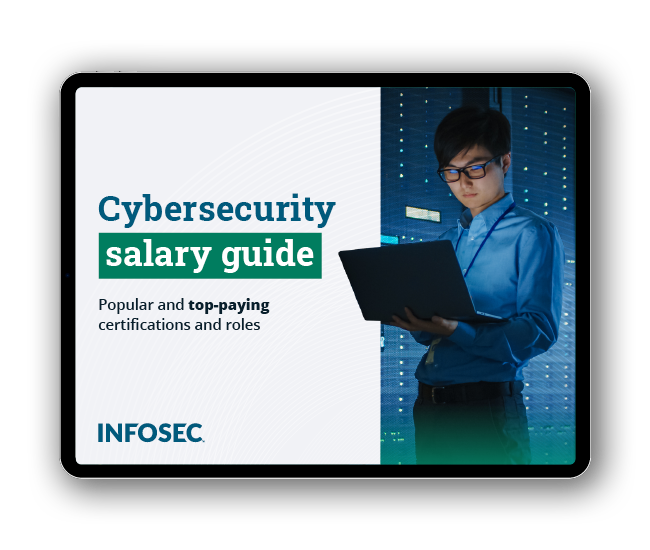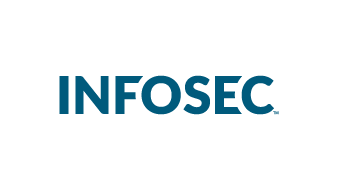IT auditor interview questions: 2025 guide
IT auditors perform independent verifications of an organization's security posture. These positions can have many name variations on job boards, including information technology auditor, IT compliance analyst, internal auditor, CISA or business analyst.
IT auditor positions exist in almost every industry, with IT auditor alaries roughly ranging from $72,000 to $175,000 depending on industry, company size and years of experience. You must understand networking, architecture, software and hardware deployment and integration and security controls to succeed in this role.
In this article, we've compiled IT auditor interview questions to help you prepare for your next interview, along with some brief direction for each answer. Naturally, these should be personalized to your experience and to each job role during an actual interview.

Earn your CISA, guaranteed!
Get your CISA live online or on-site, backed with an Exam Pass Guarantee!
1. Describe tools that can be used to assess the security posture of an enterprise or company architecture
IT auditors use different tools depending on audit objectives. For vulnerability and configuration assessment, scanners like Nessus or Qualys identify security weaknesses and compliance gaps. For network analysis and mapping, nmap helps understand network topology, while Wireshark analyzes network traffic when investigating specific concerns. Configuration assessment tools like CIS-CAT verify systems meet security baselines. Basic diagnostic tools like ping, traceroute and nslookup help verify connectivity and DNS resolution. Access control mechanisms can be reviewed through Active Directory, and endpoint protection solutions like ClamAV, Trellix or Broadcom endpoint security should be examined.
The key is selecting tools that help gather audit evidence and assess control effectiveness.
2. Describe the purpose of ACL software
ACL stands for access control list, which is software that controls user access to system services, directories or other components. Microsoft's Active Directory is a common example. From an audit perspective, ACLs are critical because they enforce the principle of least privilege. When auditing, proper verification includes confirming ACLs are correctly configured to ensure users only have access to resources needed for their job functions, and testing for segregation of duties violations.
3. What do you know about the company?
This isn't a technical question but is often used to gauge research capabilities. Visit the company's webpage and LinkedIn page to learn as much as possible. Google recent press releases or news stories that relate to the company. Be prepared to state the company's mission and vision and how long it's been in business. If possible, dig deeper and find information about its architecture structure. Share that as well.
4. How do you keep up with current industry trends?
This is an opportunity to showcase passion for the industry. Mention any technical magazines and newsletters subscribed to, relevant coursework or certifications pursued, professional associations like ISACA or IIA, security conferences attended and online resources followed. Use this question to illustrate commitment to staying current in IT auditing and understanding how emerging threats and technologies impact audit practices.
5. What are your strong points?
This is a frequently asked non-technical question. Review the job requirements and tailor the answer to show how your strengths align with the company and the position. Relevant strengths for IT auditors might include attention to detail, analytical thinking, communication skills, understanding of compliance frameworks, ability to translate technical findings for non-technical audiences, or experience with specific industries or technologies.
6. What is the difference between auditing in a Windows and Linux environment?
Many tools used in Windows are more automated or launched through a GUI. In Linux, the command line is typically used more often. From an audit perspective, control verification approaches differ. An audit policy in Windows is created through Group Policy Objects and distributed through the domain controller. In Linux, it's normally configured through the /etc/audit.rules files and managed by the auditd service. The controls tested also differ — in a Linux environment, verification includes things like GRUB boot loader passwords to prevent unauthorized single-user mode access, which isn't applicable in Windows. Understanding the file structure is critical, particularly directories like /etc (configuration), /var (logs), /home (user data), /opt and /usr (applications) and /tmp (temporary files).

Earn your CISA, guaranteed!
Get your CISA live online or on-site, backed with an Exam Pass Guarantee!
7. What is the purpose of network encryption?
Network encryption protects data confidentiality by preventing unauthorized access to data in transit. From an audit perspective, verification should confirm that appropriate encryption protocols are being used, weak or deprecated protocols are disabled, and encryption is consistently applied across all sensitive data transmissions. This is particularly important for regulatory compliance like PCI DSS, HIPAA or GDPR.
8. What are the biggest flaws in using cloud-based applications?
From an audit perspective, cloud environments present unique challenges. The shared responsibility model can create gaps if organizations don't understand what security controls they're responsible for versus the provider. Common issues include misconfigured access controls, inadequate data classification and protection, lack of visibility into cloud activities, and difficulty maintaining compliance across multiple cloud environments. Audit focus should include verifying the organization understands their responsibilities, has proper governance over cloud deployments, and maintains adequate logging and monitoring.
9. If you find a defect or bug in an application, do you try to fix it yourself?
No. The best option is to bring it to the attention of the engineering team as well as the system owners. The issue should also be documented in the final audit report. IT auditors maintain independence by identifying and reporting issues rather than implementing fixes themselves.
10. What is the benefit of an IT audit for an organization?
IT audits provide multiple benefits. They help identify vulnerabilities and control weaknesses in system architecture before they can be exploited. They verify compliance with regulatory requirements and internal policies. They provide independent assurance to management and stakeholders that IT risks are being properly managed. Perhaps most importantly, IT audits offer actionable recommendations that help organizations improve their security posture, optimize operations and demonstrate due diligence to regulators, customers and business partners.
11. What is the difference between an internal and external audit?
Company employees perform internal audits. Members of an outside firm perform external audits. Some industries require external audits to be compliant with industry regulations. Internal auditors often have deeper organizational knowledge and can provide continuous monitoring, while external auditors bring independent perspectives and are often required for stakeholder assurance or regulatory compliance.
12. How do you perform a risk assessment?
Risk assessments can vary based on industry. Some industries have pre-written risk assessment methodologies that auditors must follow. The point of every risk assessment is to use available tools or methodologies to identify the vulnerabilities specific to the organization being evaluated and create a strategy to remediate them. This typically involves identifying assets, determining threats and vulnerabilities, assessing likelihood and impact, calculating risk levels, and prioritizing remediation efforts based on risk tolerance.
13. Can you describe some of the vulnerabilities listed on the OWASP Top 10 Vulnerabilities list?
The OWASP Top 10 is periodically updated to reflect current application security risks and is widely used as a baseline for secure development. Cross-site scripting has consistently appeared on the list. Others on the current list include injections such as SQL, OS and LDAP, security misconfigurations, sensitive data exposure and vulnerable and outdated components. IT auditors use the OWASP Top 10 as a framework when auditing web applications and assessing whether development teams are following secure coding practices and implementing appropriate application security controls.
NOTE: Memorizing the entire list is helpful, but most interviewers want to know that candidates are at least familiar with it and understand its relevance to auditing application security.
14. What frameworks or standards do you use to guide your audit approach?
Common frameworks include COBIT for IT governance, NIST Cybersecurity Framework for security controls, ISO 27001 for information security management, and industry-specific standards as needed. For compliance audits, relevant regulations like SOX, HIPAA, PCI DSS or GDPR should be followed depending on the organization. ISACA's audit standards and the IIA's International Standards for the Professional Practice of Internal Auditing provide foundational guidance for conducting audits professionally and ethically.
15. How do you handle tough situations? Or, if a client was being difficult and refused to provide you with needed information, how would you handle this?
This is a great opportunity to share a personal experience where a difficult situation was handled successfully. IT auditors aren't always the favorite employees in an organization because they can make work harder for other IT team members. This question allows showcasing the ability to defuse potentially hostile situations. If this experience hasn't occurred, discuss methods that could be used, such as active listening, explaining the audit's purpose and value, building rapport, involving management when appropriate and escalating properly when necessary, while maintaining professional relationships.

Earn your CISA, guaranteed!
Get your CISA live online or on-site, backed with an Exam Pass Guarantee!
16. If you were asked to help implement a new tool, like a new SharePoint site, what questions would you ask?
Before implementation, key questions include: What is the business purpose and objective? What problem is being solved? Who will need access, and how will access be controlled? What data will be stored, and what's its classification level? What are the security and compliance requirements? How will the tool be configured and maintained? Are there any integration points with existing systems? These questions help ensure the organization considers security, privacy and compliance requirements from the start, which is far more cost-effective than retrofitting controls later.
17. How do you approach auditing in environments that use emerging technologies like AI and machine learning?
With the 2024 updates to the CISA certification, there's more emphasis on auditing AI and ML systems. When auditing these technologies, focus areas include data governance, algorithmic bias, model validation and compliance with regulations like GDPR or industry-specific frameworks. Understanding how the organization documents its AI decision-making processes and how it ensures transparency and explainability of AI outcomes is essential. Auditors should also assess data quality, model training procedures, monitoring for drift and ethical considerations.
18. How would you assess an organization's data privacy program?
Data privacy has become increasingly important with regulations like GDPR, CCPA and other regional laws. Assessment should include evaluating whether the organization has a formal data privacy framework, assessing data classification practices, reviewing data handling procedures and verifying appropriate consent mechanisms are in place. Verification should also cover data subject access request procedures and documentation of privacy impact assessments. The audit should confirm privacy by design principles are being followed.
19. What do you know about Zero Trust Architecture and how would you audit it?
Zero Trust is a security model that assumes no user or system should be inherently trusted. When auditing a Zero Trust implementation, verification should include confirming the principle of least privilege is enforced, checking that multi-factor authentication is implemented appropriately, examining micro-segmentation controls, reviewing how the organization monitors and logs access attempts and assessing continuous verification mechanisms. The audit should also evaluate identity governance and whether "never trust, always verify" principles are consistently applied.
20. How would you approach auditing cloud and virtualized environments?
For cloud environments, the first step is understanding the shared responsibility model between the cloud provider and the organization. The audit should review configuration management, identity and access controls, data protection measures, incident response procedures specific to cloud environments and compliance with applicable regulations. Examination should also include how the organization manages multi-cloud or hybrid environments, if applicable, and whether proper governance exists over shadow IT and cloud sprawl.
21. How do you evaluate an organization's operational log management practices?
Effective log management is crucial for security monitoring and compliance. Assessment should include verifying the organization has defined what events should be logged, confirming logging is enabled on critical systems, reviewing log protection mechanisms that prevent tampering, checking log retention periods meet regulatory requirements and evaluating how logs are monitored for security events. Examination should also cover log aggregation tools and procedures for investigating suspicious activities identified in logs, as well as ensuring logs provide adequate audit trails.
22. What approaches do you take when evaluating business resilience?
When assessing business resilience, the audit should review the business impact analysis to verify critical functions are properly identified, examine system and operational resilience measures, assess data backup strategies and validate restoration procedures, evaluate the business continuity plan and review disaster recovery plans. Verification should also include confirming that regular resilience testing is conducted and that test results and lessons learned are documented. The assessment should validate that recovery time objectives (RTOs) and recovery point objectives (RPOs) are clearly defined and achievable.

Get your guide to the top-paying certifications
With more than 448,000 U.S. cybersecurity job openings annually, get answers to all your cybersecurity salary questions with our free ebook!
Interview well for an IT auditor position
Being able to answer these and related questions will boost your odds of being selected for an IT auditor position. At the end of the interview, you'll likely be asked if you have questions for them. Always have questions prepared — it shows you're truly interested in the job. For example:
- What are your expectations for my first 90 days?
- What is the synergy like with the team I'll be supporting?
- What types of things can I do to contribute to the culture of the company?
- How does your organization measure the success of the IT audit function?
- What challenges is your audit team currently facing?
- How does the IT audit team interact with other departments?
- Could you describe a typical audit engagement from planning to reporting?
- What opportunities exist for professional development and growth in this role?
Questions like these will show that you're a team player focused on contributing to the organization.
Looking to advance your career in IT audit? Download our Cybersecurity certification and skills roadmap to plan your next certification steps. For salary insights in the field, check out our Cybersecurity salary guide.
Ready to pursue your CISA certification? Infosec's CISA Boot Camp provides comprehensive preparation for the 2024 exam update, with expert instruction to help you succeed.





